Find Help
More Items From Ergsy search
-
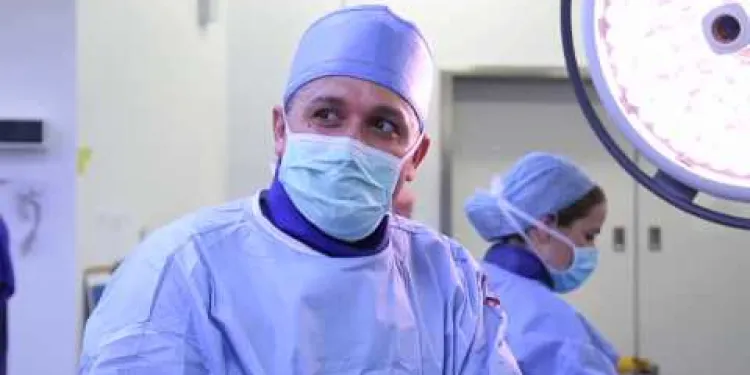
Repairing complex aortic aneurysms
Relevance: 100%
-
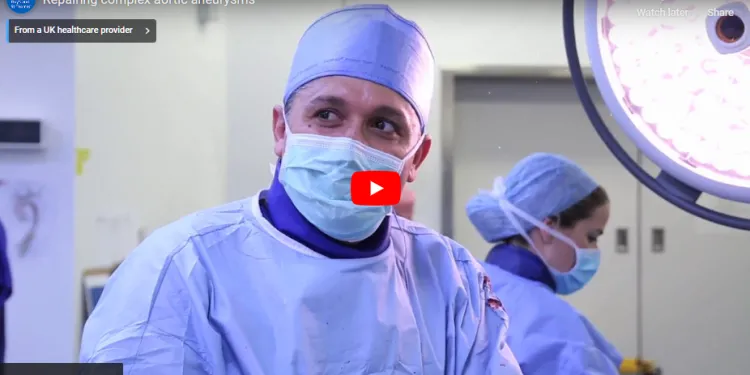
Repairing complex aortic aneurysm
Relevance: 100%
-
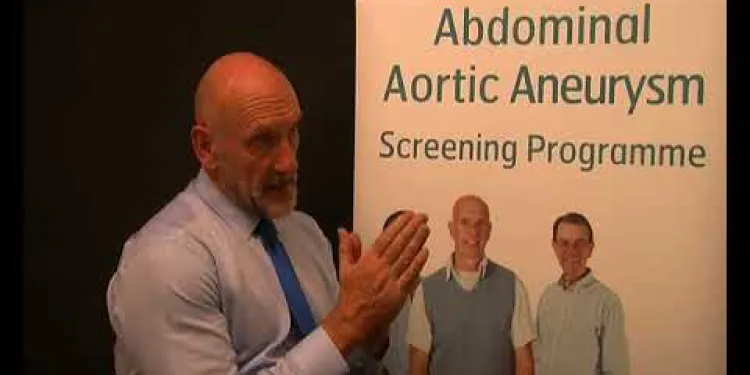
AAA (Abdominal aortic aneurysm) screening
Relevance: 49%
-

Eddie's Story - Abdominal Aortic Aneurysm (AAA) Screening
Relevance: 49%
-

NHS Abdominal Aortic Aneurysm (AAA) Screening
Relevance: 46%
-
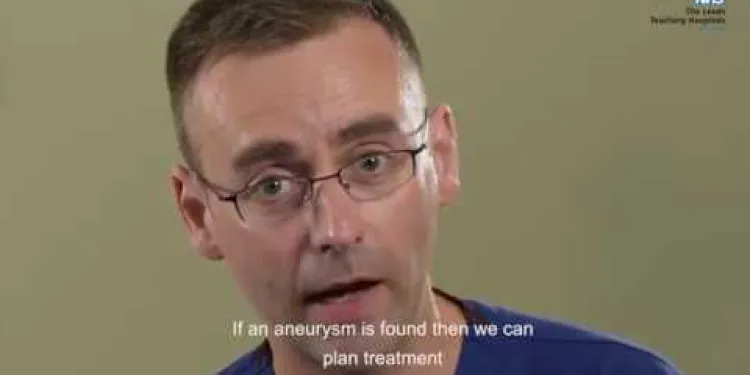
Abdominal Aortic Aneurysm (AAA) screening programme
Relevance: 44%
-
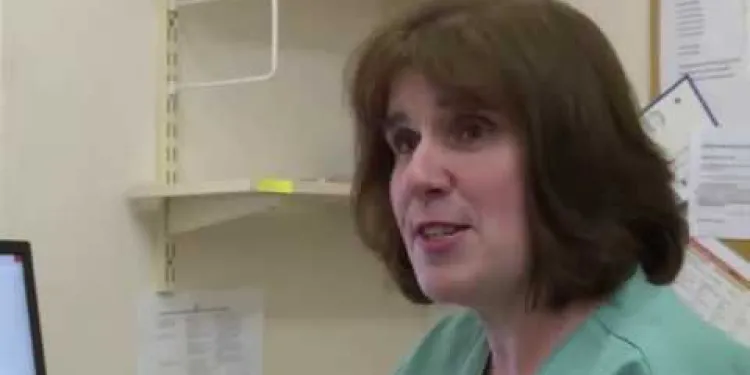
Your abdominal aortic aneurysm (AAA) screening appointment
Relevance: 43%
-

Survivor of an Abdominal Aortic Aneurysm rupture appeals for men to take up NHS Screening Programme.
Relevance: 40%
-
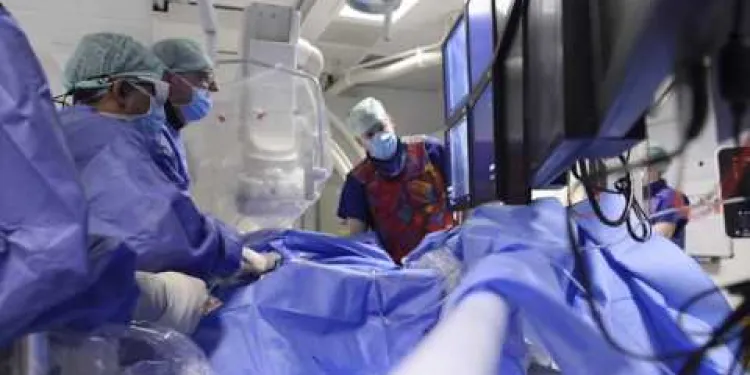
What is it like having a Transcutaneous Aortic Valve Implant (TAVI)?
Relevance: 21%
-

What is complex sleep apnea syndrome?
Relevance: 20%
-

What is complex sleep apnea syndrome?
Relevance: 20%
-

Why is it challenging to fix water leaks in the UK?
Relevance: 13%
-

What is heart valve disease?
Relevance: 10%
-

What happens if a water main bursts?
Relevance: 9%
-

How does public reporting contribute to fixing leaks?
Relevance: 9%
-

How are landlord-tenant issues resolved in property litigation?
Relevance: 9%
-
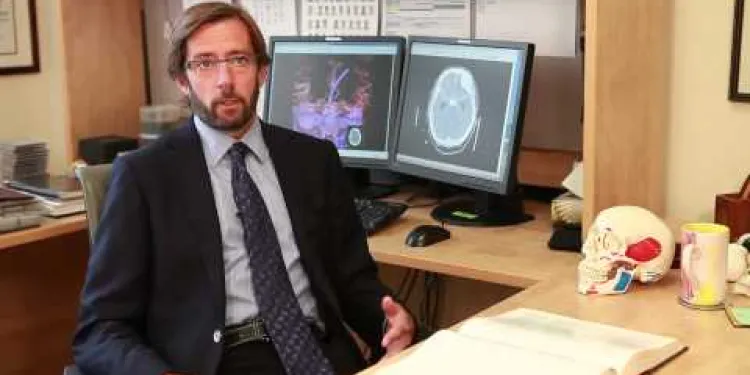
What is a Subarachnoid Hemorrhage?
Relevance: 9%
-

What challenges do water companies face in maintaining infrastructure?
Relevance: 8%
-

How are disputes between landlords and tenants handled?
Relevance: 8%
-

Health Screenings You Should Know About
Relevance: 8%
-

How can a property litigator assist in lease disputes?
Relevance: 7%
-

Can a landlord evict me for complaining about property conditions?
Relevance: 7%
-

Can recalled products be resold?
Relevance: 7%
-

Can customers report issues with water infrastructure?
Relevance: 6%
-
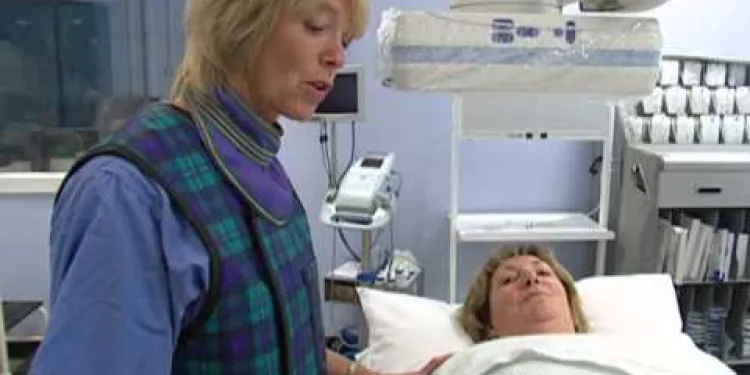
Having a CT Angiogram
Relevance: 6%
-

How do I maintain my mosquito screens?
Relevance: 6%
-

What safety precautions should be taken when using mobility equipment?
Relevance: 6%
-

What causes water loss in the UK?
Relevance: 6%
-

What types of disputes are involved in property litigation?
Relevance: 6%
-

What does water infrastructure maintenance involve?
Relevance: 6%
-
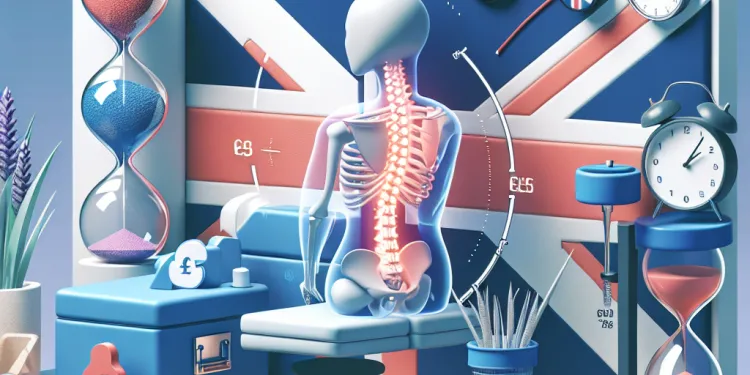
How long does a chiropractic session usually take?
Relevance: 5%
-

How do cognitive changes in older adults influence driving risk?
Relevance: 5%
-

Are there support grants specifically for seniors?
Relevance: 5%
-

What causes heart failure?
Relevance: 5%
-

Hernias and their Treatments - A guide for patients
Relevance: 5%
-

How long do boundary disputes typically take to resolve?
Relevance: 5%
-

What role does technology play in infrastructure maintenance?
Relevance: 5%
-

What are the main types of sleep apnea?
Relevance: 5%
-

How much water is lost in the UK through poor infrastructure?
Relevance: 5%
-

What are the administrative costs of a wealth tax?
Relevance: 5%
Repairing Complex Aortic Aneurysms
Understanding Aortic Aneurysms
An aortic aneurysm is an expansion or bulge in the aorta, the main artery carrying blood from the heart to the rest of the body. When such an aneurysm occurs, especially in the chest (thoracic aortic aneurysm) or abdomen (abdominal aortic aneurysm), it can become life-threatening. Complex aortic aneurysms often involve multiple branches of the aorta or occur in difficult-to-treat areas, making repair more intricate and challenging.Diagnosis and Risk Factors
Identifying aortic aneurysms often involves imaging techniques such as ultrasound, CT scans, or MRI scans. Risk factors for developing aortic aneurysms include smoking, high blood pressure, high cholesterol, genetic factors, and certain medical conditions like Marfan syndrome. Regular monitoring and early diagnosis can significantly improve treatment outcomes.Treatment Options
Repairing complex aortic aneurysms typically involves surgical interventions. The two main surgical treatments are open repair and endovascular aneurysm repair (EVAR).Open Repair Surgery
Open repair surgery involves a large incision in the chest or abdomen to directly visualize and repair the aneurysm. This method traditionally has been the gold standard for repairing complex aneurysms. It allows surgeons to replace the damaged part of the aorta with a synthetic graft. However, this procedure involves significant risks and a longer recovery time.Endovascular Aneurysm Repair (EVAR)
EVAR is a minimally invasive alternative, where a stent-graft is delivered to the aneurysm site through small incisions in the groin. This method is particularly advantageous for complex aneurysms, as it reduces recovery time and complications. EVAR is increasingly preferred for patients who cannot endure the stress of open surgery.Post-Procedure Care and Recovery
After repairing a complex aortic aneurysm, whether through open repair or EVAR, close monitoring is crucial. Regular follow-ups with imaging tests ensure that the repair remains intact and the aneurysm does not recur. Patients are advised to adopt lifestyle changes such as quitting smoking, managing blood pressure, and maintaining a healthy diet to reduce the risk of further complications.Leading Medical Centres in the UK
The United Kingdom is home to several leading medical centres specializing in the repair of complex aortic aneurysms. Institutions such as St Bartholomew's Hospital in London, the Royal Infirmary of Edinburgh, and Manchester Royal Infirmary offer advanced treatment options and boast highly skilled vascular surgeons.Conclusion
Repairing complex aortic aneurysms requires a nuanced approach tailored to each patient's unique condition. Advances in medical technology and surgical techniques have significantly improved outcomes, but early diagnosis and regular monitoring remain key to successful treatment. Patients in the UK have access to excellent care and cutting-edge procedures, ensuring the best possible outcomes for those affected by this serious condition.Fixing Complex Aortic Bulges
What is an Aortic Bulge?
An aortic bulge is when the big blood tube from the heart, called the aorta, gets bigger like a balloon. If this happens, especially in the chest or tummy, it can be dangerous. Some bulges are tricky to fix because they are in hard-to-reach places.Finding Aortic Bulges and What Causes Them
Doctors use special pictures like ultrasound, CT, or MRI scans to find these bulges. Things that can make them happen include smoking, high blood pressure, high cholesterol, and some genetic conditions like Marfan syndrome. Regular check-ups can help find and fix them early.Ways to Fix a Bulge
Doctors use surgery to fix these bulges. There are two main ways to do this: open repair and a smaller surgery called EVAR.Open Repair Surgery
Open repair surgery means doctors cut open the chest or tummy to fix the bulge. They replace the damaged part with something new. This surgery is serious and takes a long time to recover from.Endovascular Aneurysm Repair (EVAR)
EVAR is a smaller surgery. Doctors use tiny cuts near the hip to put a new tube inside the bulge. This way, people get better faster and there are fewer problems. EVAR is good for people who cannot handle big surgeries.Care After Surgery
After surgery, doctors watch you closely to make sure everything is okay. You need regular check-ups with pictures to see if the fix is working. Doctors also say it's important to stop smoking, keep blood pressure down, and eat healthy to stay well.Top Hospitals in the UK
The UK has great hospitals for fixing aortic bulges. St Bartholomew's Hospital in London and the Royal Infirmary in Edinburgh are some places with expert doctors who can help.Summary
Fixing complex aortic bulges needs special care for each person. New technology helps a lot, but finding the problem early is very important. In the UK, there are excellent doctors and hospitals ready to help people with this serious health issue.Frequently Asked Questions
What is a complex aortic aneurysm?
A complex aortic aneurysm is an enlargement of the aorta that involves challenging locations or multiple branches, requiring advanced surgical techniques to repair.
What types of surgeries are available for complex aortic aneurysms?
Surgical options include open surgical repair, endovascular aneurysm repair (EVAR), and hybrid procedures combining both techniques.
What are the risks associated with complex aortic aneurysm repair?
Risks can include bleeding, infection, kidney complications, and spinal cord ischemia, among others.
How is a complex aortic aneurysm diagnosed?
Diagnosis typically involves imaging tests such as an ultrasound, CT scan, or MRI to assess the aneurysm's size and location.
What symptoms might indicate a complex aortic aneurysm?
Most aneurysms are asymptomatic until they become large or rupture. Symptoms, if they occur, can include back pain, a pulsating feeling in the abdomen, or sudden, severe pain.
What factors increase the risk of developing an aortic aneurysm?
Risk factors include advanced age, smoking, high blood pressure, high cholesterol, and a family history of aneurysms.
How long is the recovery period after complex aortic aneurysm surgery?
Recovery time varies; for open surgery, it may take several weeks to months, while EVAR typically has a shorter recovery period of a few days to weeks.
Is it possible to prevent aortic aneurysms?
Lifestyle changes such as quitting smoking, managing blood pressure and cholesterol, and maintaining a healthy diet can help reduce the risk.
Will I need follow-up care after my surgery?
Yes, regular follow-up appointments are crucial to monitor the repair and ensure there are no complications or recurrences.
What should I expect during the pre-surgery preparation?
Pre-surgery preparation may include blood tests, imaging studies, and consultations with your surgical and anesthesia teams.
Can medication manage aortic aneurysms?
Medications can manage risk factors such as high blood pressure and cholesterol but do not cure aneurysms. Surgical intervention is often necessary.
What is endovascular aneurysm repair (EVAR)?
EVAR is a minimally invasive procedure where a stent-graft is inserted inside the aorta via arteries in the groin to reinforce the aneurysmal section.
What is the difference between thoracic and abdominal aortic aneurysms?
Thoracic aortic aneurysms occur in the chest portion of the aorta, while abdominal aortic aneurysms occur in the abdominal portion.
Are there any personal lifestyle changes I should make after surgery?
Post-surgery, patients should adopt a heart-healthy lifestyle, including regular exercise, a balanced diet, quitting smoking, and regular medical screenings.
What should I look for in a specialised surgeon for complex aortic aneurysm repair?
Look for a surgeon with extensive experience in vascular and endovascular surgery, preferably one who has completed numerous similar procedures.
What is a complicated aortic bump?
An aortic bump is when the big tube in your body, called the 'aorta,' has a weak spot and it gets bigger like a balloon.
A "complicated aortic bump" means that this bump might be tricky to fix because it could be big, have a funny shape, or be in a hard-to-reach spot.
If you're finding this hard to understand, you can ask someone to explain it to you with a drawing or watch a video about aortic bumps.
A complex aortic aneurysm is when the big blood tube in your body gets bigger. It happens in tricky places or involves more parts of the tube. Fixing it needs special surgery skills.
If you find this hard to read, you can use tools like text-to-speech to listen instead. Using a dictionary can also help with hard words.
What surgeries can help with complex aortic aneurysms?
Aortic aneurysms are big bumps in a tube in your body called the aorta. These bumps can be dangerous. Doctors have special surgeries to fix them.
Here are some surgeries doctors might use:
- Open surgery: The doctor opens your body to fix the bump.
- Endovascular repair: The doctor uses special tubes and tools. These go inside your body through a small cut.
If you or someone you know has questions, talk to a doctor. You can also use tools like pictures and videos to understand better.
There are different ways to fix the problem with surgery. These include:
1. Open surgery: The doctor makes a big cut and fixes the problem inside.
2. EVAR: The doctor uses tools to fix the problem through a small cut.
3. Hybrid: The doctor uses both open surgery and EVAR together.
Using pictures or videos might help you understand better.
What are the dangers of fixing a complicated bulge in the aorta?
Fixing a complicated bulge in the aorta can be risky. The aorta is a big blood tube in the body, and bulges can be dangerous if not fixed. Here are some things to think about:
- Bleeding: There might be too much bleeding when the doctor fixes the bulge.
- Infection: The place where the doctor works can get bad germs, which might cause an infection.
- Heart problems: The heart might have trouble during or after the fix.
- Kidney problems: The fix could make kidneys work not so good.
- Nerve injury: The work might hurt nerves, and this can cause tingling or weakness.
It's important to talk to your doctor. They can help understand these dangers better. Tools like picture books or videos can help see what happens. Ask someone to help you understand if you need it!
There can be some risks. These include bleeding, infection, kidney problems, and issues with the spine.
Here are some tips to help understand:
- Use a dictionary to learn new words.
- Ask someone for help if you don't understand something.
- Take your time reading each sentence.
How do doctors find out if someone has a complex aortic aneurysm?
To find out if there is an aneurysm, doctors do special tests. They might use an ultrasound, a CT scan, or an MRI. These tests help them see how big the aneurysm is and where it is in the body.
What signs might show a problem with the aorta?
The aorta is a big blood tube in the body.
An aneurysm is a bulge or balloon in the aorta.
Here are some signs that there might be a problem:
- Pain in the belly or back.
- A feeling of throbbing or pulsing in the belly.
- If it gets worse, you might feel weak or dizzy.
If you feel these signs, it is important to tell a grown-up or see a doctor.
Using a picture of the body can help understand where the aorta is.
It can also help to talk to someone who knows about it.
Most of the time, aneurysms do not show any signs until they get big or break open. If there are signs, they can be back pain, a throbbing feeling in the belly, or sudden strong pain.
What makes it more likely to have an aortic aneurysm?
Some things can make a person more likely to get an aneurysm. These include being older, smoking, having high blood pressure, having high cholesterol, and if others in your family have had aneurysms.
How long does it take to get better after a big aortic aneurysm surgery?
After surgery, it can take some time to feel well again.
Here are some things that might help:
- Take rest often. Your body needs time to heal.
- Ask a doctor when you can do normal activities.
- Follow your doctor’s advice.
- Use reminders to take your medicine.
- Talk to a nurse or doctor if you have questions.
Getting better after surgery takes different times. If you have open surgery, it might take a few weeks or even months to feel better. If you have EVAR, which is a different kind of surgery, it usually takes a few days to a few weeks to recover.
Can you stop an aortic aneurysm from happening?
Changing how you live can help you stay healthy. Here are some things you can do:
- Stop smoking.
- Keep your blood pressure and cholesterol in check.
- Eat healthy food.
These steps can help lower your risk of health problems.
Try using apps or joining groups to help you quit smoking. Use a blood pressure meter to track your numbers. Ask your doctor for advice on healthy food.
Will I need care after my surgery?
Yes, it is very important to go for regular check-ups. This helps the doctor make sure everything is healing well. They want to make sure the problem does not come back.
What happens before my surgery?
Here is what you can expect before your surgery:
- The doctor will talk to you and tell you what will happen.
- You might need to stop eating or drinking for some hours.
- You may get instructions about taking your usual medicines.
- The nurse will check your weight, temperature, and blood pressure.
- You might get special clothes to wear for the surgery.
Tools to help you:
- Ask someone you trust to help you understand the instructions.
- Write down any questions you have so you can ask the doctor.
- Use pictures or drawings to help you understand the process.
Before the surgery, the doctor might check your blood, take pictures inside your body, and talk with other doctors who will help you during the surgery.
Can medicine help with aortic aneurysms?
An aortic aneurysm is when a big blood vessel in the body gets too big.
Doctors sometimes use medicine to help with this.
Medicine can help keep blood pressure low. This helps stop the problem from getting worse.
It's important to visit the doctor to talk about how medicine can help you.
Here are some tips that might help:
- Use pictures or drawings to understand what is happening inside your body.
- Ask your doctor to explain things in simple words.
- Take a friend or family member with you to the doctor for help.
Medicines can help with things like high blood pressure and high cholesterol. But they do not fix aneurysms. Surgery is often needed to fix aneurysms.
What is endovascular aneurysm repair (EVAR)?
Endovascular aneurysm repair, or EVAR, is a way to fix a weak spot in a blood vessel. Doctors use a special tube called a stent inside the blood vessel.
The stent helps the blood vessel stay strong. This stops it from breaking.
If you want to know more, you can ask your doctor. You can also use pictures or videos to understand better.
EVAR is a simple surgery. Doctors put a tube called a stent-graft inside the big blood vessel in your body, called the aorta. They do this through the arteries in your groin to make a weak part of the aorta stronger.
How are thoracic and abdominal aortic aneurysms different?
Sometimes, the big blood vessel in our chest can get weak. This is called a thoracic aortic aneurysm. When it happens in our tummy, it is called an abdominal aortic aneurysm.
Should I change how I live after surgery?
Here are some things you might think about after surgery:
- Eat Healthy Food: Try to eat fruits, vegetables, and good foods.
- Move Safely: Ask your doctor about safe exercises.
- Rest Well: Make sure you get enough sleep to heal.
- Follow Doctor's Advice: Follow all instructions from your doctor.
Here are some tools that can help:
- Calendar or Planner: Use it to track appointments and medicines.
- Reminders: Set reminders for medicines and check-ups.
Talk to your doctor or nurse if you need more help.
After an operation, people need to take care of their heart. This means doing some good things like:
- Exercising often
- Eating healthy food
- Not smoking
- Going to the doctor for check-ups
It's important to do these things to stay well.
What do I need to find a good doctor for fixing a big problem in the heart?
Find a doctor who has done lots of operations on blood vessels. They should know both open surgery and surgery using tubes and wires. It's best if they have done many of these surgeries before.
Useful Links
- Ergsy carfully checks the information in the videos we provide here.
- Videos shown by Youtube after a video has completed, have NOT been reviewed by ERGSY.
- To view, click the arrow in centre of video.
- Most of the videos you find here will have subtitles and/or closed captions available.
- You may need to turn these on, and choose your preferred language.
- Go to the video you'd like to watch.
- If closed captions (CC) are available, settings will be visible on the bottom right of the video player.
- To turn on Captions, click settings .
- To turn off Captions, click settings again.
More Items From Ergsy search
-

Repairing complex aortic aneurysms
Relevance: 100%
-

Repairing complex aortic aneurysm
Relevance: 100%
-

AAA (Abdominal aortic aneurysm) screening
Relevance: 49%
-

Eddie's Story - Abdominal Aortic Aneurysm (AAA) Screening
Relevance: 49%
-

NHS Abdominal Aortic Aneurysm (AAA) Screening
Relevance: 46%
-

Abdominal Aortic Aneurysm (AAA) screening programme
Relevance: 44%
-

Your abdominal aortic aneurysm (AAA) screening appointment
Relevance: 43%
-

Survivor of an Abdominal Aortic Aneurysm rupture appeals for men to take up NHS Screening Programme.
Relevance: 40%
-

What is it like having a Transcutaneous Aortic Valve Implant (TAVI)?
Relevance: 21%
-

What is complex sleep apnea syndrome?
Relevance: 20%
-

What is complex sleep apnea syndrome?
Relevance: 20%
-

Why is it challenging to fix water leaks in the UK?
Relevance: 13%
-

What is heart valve disease?
Relevance: 10%
-

What happens if a water main bursts?
Relevance: 9%
-

How does public reporting contribute to fixing leaks?
Relevance: 9%
-

How are landlord-tenant issues resolved in property litigation?
Relevance: 9%
-

What is a Subarachnoid Hemorrhage?
Relevance: 9%
-

What challenges do water companies face in maintaining infrastructure?
Relevance: 8%
-

How are disputes between landlords and tenants handled?
Relevance: 8%
-

Health Screenings You Should Know About
Relevance: 8%
-

How can a property litigator assist in lease disputes?
Relevance: 7%
-

Can a landlord evict me for complaining about property conditions?
Relevance: 7%
-

Can recalled products be resold?
Relevance: 7%
-

Can customers report issues with water infrastructure?
Relevance: 6%
-

Having a CT Angiogram
Relevance: 6%
-

How do I maintain my mosquito screens?
Relevance: 6%
-

What safety precautions should be taken when using mobility equipment?
Relevance: 6%
-

What causes water loss in the UK?
Relevance: 6%
-

What types of disputes are involved in property litigation?
Relevance: 6%
-

What does water infrastructure maintenance involve?
Relevance: 6%
-

How long does a chiropractic session usually take?
Relevance: 5%
-

How do cognitive changes in older adults influence driving risk?
Relevance: 5%
-

Are there support grants specifically for seniors?
Relevance: 5%
-

What causes heart failure?
Relevance: 5%
-

Hernias and their Treatments - A guide for patients
Relevance: 5%
-

How long do boundary disputes typically take to resolve?
Relevance: 5%
-

What role does technology play in infrastructure maintenance?
Relevance: 5%
-

What are the main types of sleep apnea?
Relevance: 5%
-

How much water is lost in the UK through poor infrastructure?
Relevance: 5%
-

What are the administrative costs of a wealth tax?
Relevance: 5%


